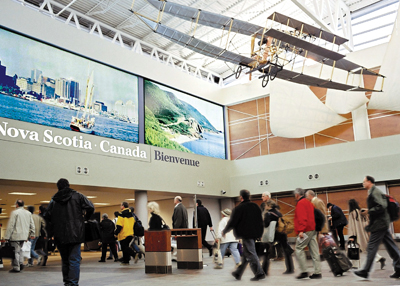
Features
Airports
On Final: Renewing Canada’s airport model
This model for the development and operation of airport infrastructure we have in Canada is fairly unique in the world.
September 27, 2010 By Bill Restall
In 1992, operation of Calgary, Vancouver, Edmonton and Montreal airports was transferred from the federal government to new not-for-profit airport authorities. This marked the commencement of a new National Airports Policy that would see Canada’s federal government get out of the airport business.
 |
|
Before devolution even began and the federal government first thought about getting out of the business of running airports, there were several models considered for airport devolution, most notably:
- Transfer to independent local operating authority
- Transfer to a provincial or territorial government
- Transfer to a municipal government
- Outright privatization
- Retain and operate the airport
- Close the airport
Several airports were transferred to municipalities. For example, Abbotsford International Airport in B.C. was transferred to the city in 1997 for $10. The city operates the airport at arms length, but many smaller communities elected to operate their airports more directly. In other communities, such as Stephenville, Nfld., airports were devolved to separate airport authorities, commissions or societies, which operate their airport with varying degrees of independence from city government.
The Province of Saskatchewan took on one former federal airport at Uranium City, while the federal government devolved all of its territorial airports to their respective territories.
The federal government decided to designate National Airports System (NAS) airports – the 27 airports in total deemed to be of particular national significance – and these airports were transferred to not-for-profit local airport authorities under the terms of a 60-year lease.
No airports were fully privatized under devolution. While private corporations are involved in the operation of airports in many communities, such as Hamilton and Kamloops, these airports are operated on behalf of, and accountable to, local governments.
All of the transfers came with a responsibility on the part of the new airport operator to assume operating and capital costs. But while under most models, airports were transferred for a nominal fee (like $1), NAS airports actually were transferred with an obligation to pay millions in annual rent to the federal government – some $300 million a year.
This model for the development and operation of airport infrastructure we have in Canada is fairly unique in the world. In most countries, airports are operated either as public entities, reliant on taxpayer largesse, or regulated profit-seeking corporations. In Canada, local airport authorities are accountable to the communities they serve and are responsible for both capital and operating costs.
Today, airports have world-class airport infrastructure, primarily self-funded at an investment cost totalling $10 billion. They operate in a commercially self-sustaining manner and have more than paid back the initial taxpayer investment into the nation’s airport infrastructure.
However, it is no secret that Canada’s aviation sector suffers a competitive disadvantage with other parts of the world. The reason for the competitive difference is clear – Canada has one of the highest levels of aviation taxation in the world. Canadian air travellers shoulder their share of the nearly $300 million in annual rent paid by Canada’s airports sector. In addition, there is the Goods and Services Tax (GST), an Air Travellers Security Charge, fuel excise charges and navigation service charges.
As we noted, Canadian airport infrastructure also is in majority financed through a passenger fee model, unlike its foreign competitors that may have a more government-based funding approach. This is an essential part of the current model, but adds even more to the cost of aviation through Airport Improvement Fees.
Canada’s airports today are seeking permanent solutions to the cost dilemma, and the business model is coming under focus. While some airports are content with something close to the status quo, others are asking themselves if a major change in business model might better serve their communities.
Moving forward, it is time to reopen the debate on Canada’s National Airports Policy. Let the discussions begin.
Bill Restall is chair of the Canadian Airports Council.